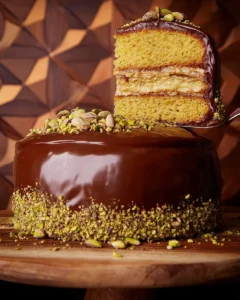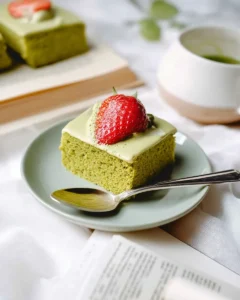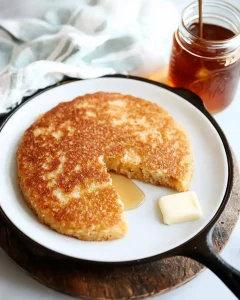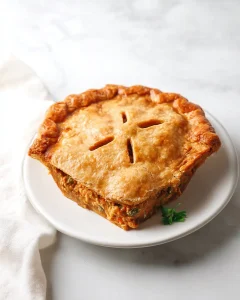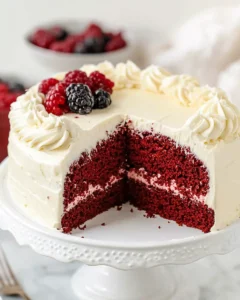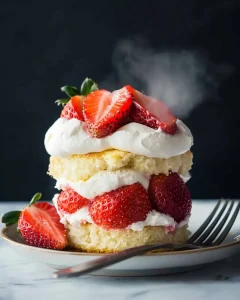The Ultimate Guide to Red Velvet Desserts
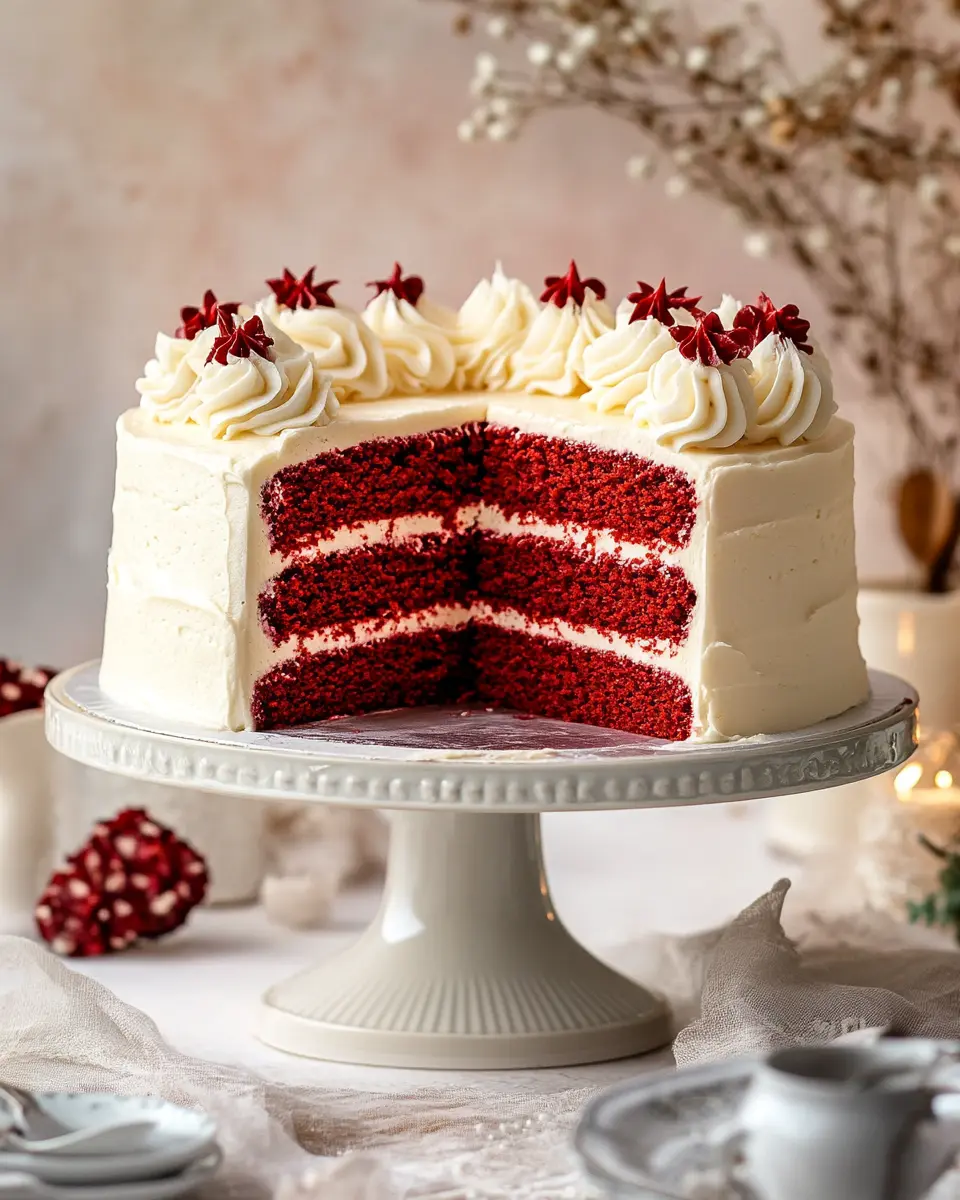
Red velvet desserts have captivated dessert lovers for over a century with their distinctive crimson color, subtle chocolate flavor, and luxurious cream cheese frosting. Whether you’re a beginner baker looking for foolproof recipes or an experienced pastry chef seeking to perfect your technique, this comprehensive guide covers everything you need to know about creating show-stopping red velvet desserts.
From the convenience of cake mix shortcuts to gluten-free alternatives and trendy cookie variations, we’ll explore the science behind what makes red velvet special and guide you through mastering these beloved treats. Let’s dive into the world of red velvet baking and discover why these desserts continue to be America’s favorite indulgence.
What Makes Red Velvet Desserts Special?
Red velvet’s unique appeal lies in its perfect balance of flavors and textures. Unlike traditional chocolate desserts, red velvet features a subtle cocoa flavor enhanced by buttermilk’s tanginess and vinegar’s acidity.
The signature red color, originally achieved through a chemical reaction between cocoa and acidic ingredients, now typically comes from food coloring. If you’d like to dive deeper into the fascinating history and evolution of red velvet, King Arthur Baking has an excellent resource on the origins of red velvet cake
The hallmark cream cheese frosting provides the perfect creamy contrast to the cake’s tender crumb, creating a dessert that’s both visually stunning and incredibly satisfying. This combination has made red velvet a staple at celebrations, from birthday parties to Valentine’s Day gatherings.
Table of Contents
Mastering Red Velvet Cake with Cake Mix – The Quick & Easy Approach
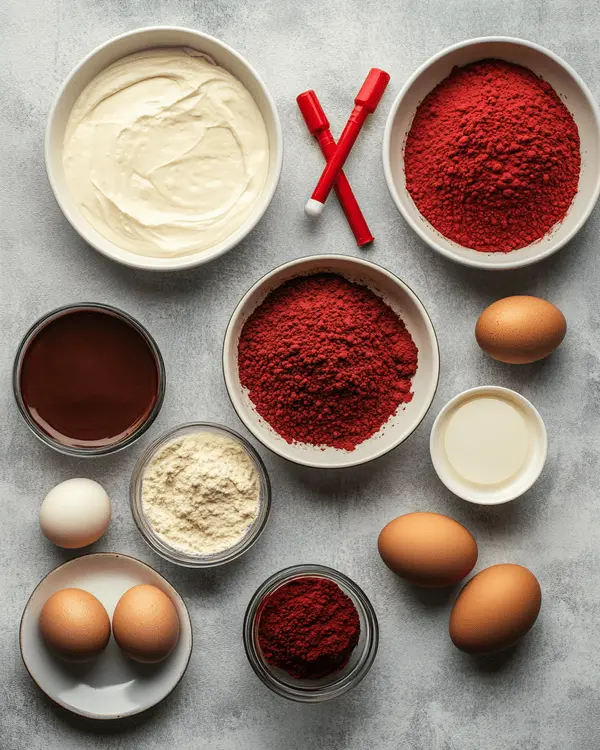
Why Choose Cake Mix for Red Velvet?
Using cake mix for red velvet desserts offers several advantages, especially for busy bakers or those new to red velvet baking. Quality cake mixes provide consistent results, save time, and can be enhanced with simple additions to achieve bakery-quality flavor and texture.
The key to elevating cake mix red velvet lies in understanding which ingredients to add and how to modify the basic recipe. By incorporating buttermilk, extra eggs, and the right amount of cocoa powder, you can transform a simple box mix into a dessert that rivals scratch-made versions.
Essential Ingredients for Enhanced Cake Mix Red Velvet
The foundation of exceptional cake mix red velvet starts with selecting the right base and enhancement ingredients:
- Premium white or vanilla cake mix (avoid chocolate-based mixes)
- Buttermilk for authentic tang and tender crumb
- Cocoa powder for that subtle chocolate undertone
- Red food coloring (gel coloring provides more vibrant results)
- White vinegar for traditional flavor complexity
- Quality vanilla extract for depth
Professional Tips for Perfect Results
Success with cake mix red velvet depends on proper technique and timing. The mixing process should be gentle to avoid overmixing, which can result in a tough texture. Temperature control is crucial – ingredients should be at room temperature for optimal blending.
The baking process requires careful monitoring, as enhanced cake mix batters can behave differently than standard preparations. Proper cooling techniques ensure your layers maintain their structure for frosting application.
Ready to create the perfect cake mix red velvet? Our detailed ultimate red velvet cake with cake mix recipe provides step-by-step instructions, timing guidelines, and professional frosting techniques to guarantee bakery-quality results every time.
Gluten-Free Red Velvet Perfection – Inclusive Baking Without Compromise
Understanding Gluten-Free Red Velvet Challenges
Creating gluten-free red velvet that matches the texture and flavor of traditional versions requires understanding how different flour blends affect the final product. Gluten provides structure and elasticity in traditional baking, so successful gluten-free alternatives must replicate these qualities through careful ingredient selection and technique modification.
The key challenges include maintaining the characteristic tender crumb, preventing grittiness, and ensuring proper rise and structure. Modern gluten-free flour blends have revolutionized this process, making it easier than ever to create exceptional gluten-free red velvet desserts.
Best Gluten-Free Flour Blends for Red Velvet
Not all gluten-free flours are created equal for red velvet applications. The ideal blend combines multiple flours and starches to achieve the proper texture:
- Rice flour provides structure without heaviness
- Tapioca starch adds chewiness and helps bind ingredients
- Potato starch contributes to moisture retention
- Almond flour enhances flavor and creates tender texture
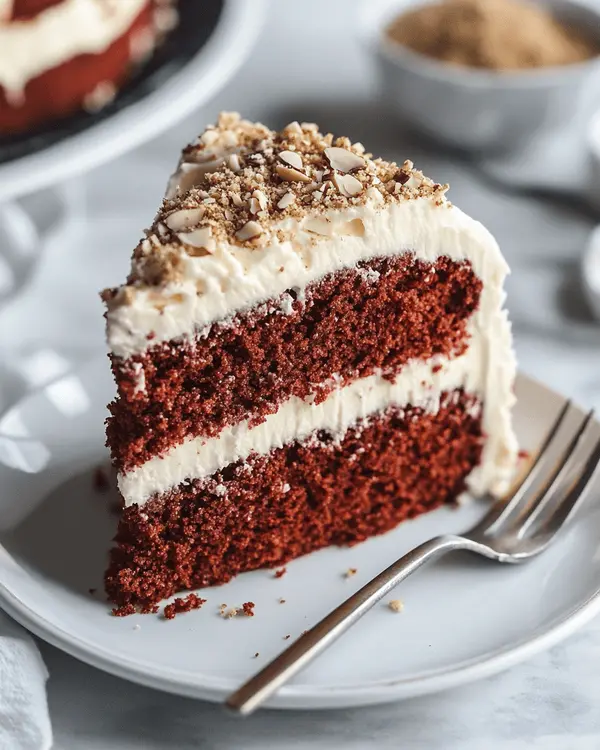
Modification Techniques for Gluten-Free Success
Successful gluten-free red velvet requires specific adjustments to traditional recipes. Liquid ratios often need modification to accommodate the different absorption properties of gluten-free flours. Binding agents like xanthan gum help replicate gluten’s structural properties.
Mixing techniques also differ – gluten-free batters often benefit from longer mixing times to fully hydrate the flour blend and develop proper structure. Temperature and timing adjustments ensure optimal results.
Flavor Enhancement Strategies
Gluten-free red velvet can actually surpass traditional versions in flavor intensity. The absence of gluten allows other flavors to shine more prominently. Strategic use of vanilla, almond extract, and cream cheese in the batter itself can create depth that complements the classic cream cheese frosting.
Discover the secrets to incredible gluten-free red velvet! Our comprehensive ultimate gluten-free red velvet cake guide includes tested flour blend recommendations, detailed mixing instructions, and troubleshooting tips for perfect results every time.
Crumbl-Style Red Velvet Cookies – The Modern Red Velvet Revolution
The Rise of Red Velvet Cookies
Red velvet cookies have emerged as one of the most popular modern interpretations of the classic dessert flavor profile. Pioneered by bakeries like Crumbl Cookies, these treats combine the beloved taste of red velvet cake with the convenience and portability of cookies.
The challenge lies in translating cake-like flavors and textures into a cookie format while maintaining the signature characteristics that make red velvet special. Success requires understanding how to balance moisture, structure, and flavor intensity in a completely different baking format.
Key Differences from Traditional Red Velvet
Red velvet cookies require a different approach than their cake counterparts. The moisture content must be carefully controlled to achieve the perfect chewy texture without creating soggy cookies. The cocoa and acid balance needs adjustment to work within a denser, more concentrated format.
Cream cheese frosting for cookies also requires modification – it must be stable enough to hold its shape while maintaining the creamy texture that makes red velvet irresistible. Temperature considerations become even more critical in cookie applications.
Essential Techniques for Cookie Success
Creating bakery-quality red velvet cookies requires mastering several key techniques:
Texture Balance: Achieving the perfect chewy-soft texture requires precise flour-to-fat ratios and careful mixing techniques. Overmixing can result in tough cookies, while undermixing leads to uneven texture.
Flavor Concentration: Cookie format requires more concentrated flavoring than cake recipes. The cocoa, vanilla, and tang elements must be intensified to shine through the denser format.
Frosting Application: Professional-style cream cheese frosting for cookies needs specific consistency and application techniques for that signature bakery appearance.
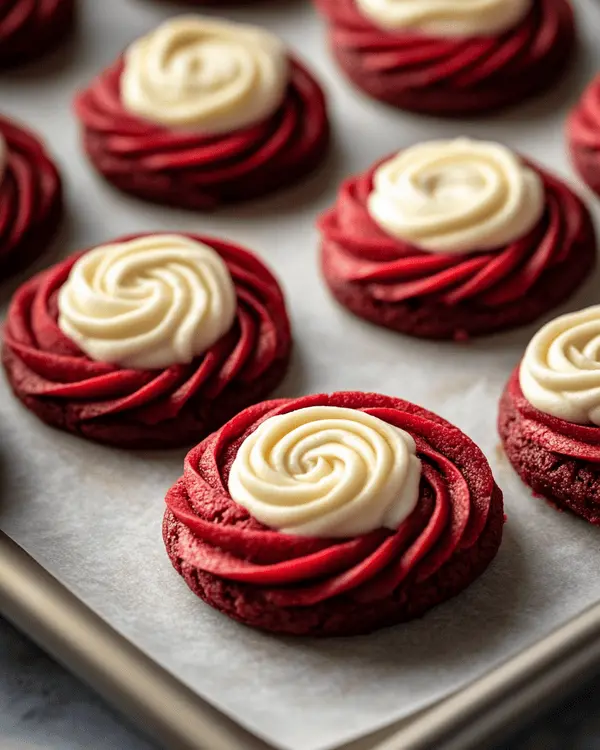
Styling and Presentation Tips
The visual appeal of red velvet cookies is crucial for achieving that coveted bakery-style presentation. Color intensity, frosting technique, and finishing touches all contribute to professional results.
Proper storage and serving considerations ensure your cookies maintain their appeal from baking to consumption. Understanding how these elements work together separates good homemade cookies from bakery-quality masterpieces.
Ready to master the art of red velvet cookies? Our detailed Crumbl cookie red velvet ultimate guide provides all the secrets, techniques, and insider tips you need to create bakery-quality red velvet cookies that rival the professionals.
Essential Red Velvet Science: Understanding What Makes It Work
The Chemistry Behind the Color
Traditional red velvet’s color came from a natural chemical reaction between cocoa powder and acidic ingredients like buttermilk and vinegar. This reaction created a reddish-brown hue that gave the dessert its name. Modern recipes typically use food coloring to achieve the vibrant red we expect today.
Understanding this chemistry helps bakers make informed decisions about ingredient substitutions and modifications while maintaining authentic flavor profiles.
Flavor Profile Development
Red velvet’s signature taste comes from the careful balance of several key elements:
- Subtle chocolate from cocoa powder (not overwhelming like chocolate cake)
- Tangy notes from buttermilk and vinegar
- Vanilla complexity from quality extract
- Creamy richness from the traditional cream cheese frosting
This balance is what distinguishes red velvet from simple chocolate cake with red coloring.
Professional Tips for Red Velvet Success
Ingredient Quality Matters
The difference between good and exceptional red velvet often comes down to ingredient quality. Real vanilla extract, fresh buttermilk, and high-quality cocoa powder significantly impact the final result. Gel food coloring provides more vibrant color without affecting texture.
Temperature and Timing Control
Room temperature ingredients blend more easily and create better texture. Proper baking temperatures and timing prevent overcooking, which can result in dry, tough desserts. Cooling procedures affect frosting application and final presentation.
Storage and Serving Considerations
Red velvet desserts have specific storage requirements to maintain their signature texture and appearance. Understanding these requirements ensures your desserts taste as good on day two as they did fresh from the oven.
Conclusion: Your Red Velvet Journey Starts Here
Mastering red velvet desserts opens up a world of baking possibilities, from quick weeknight treats using cake mix to impressive gluten-free showstoppers and trendy cookie creations. Each approach offers unique advantages and can be tailored to your specific needs and skill level.
Whether you’re drawn to the convenience of enhanced cake mixes, the inclusivity of gluten-free options, or the modern appeal of red velvet cookies, the techniques and insights in this guide provide the foundation for consistent, professional-quality results.
Remember, great red velvet is about more than just achieving the right color – it’s about balancing flavors, perfecting textures, and creating desserts that bring joy to every occasion. Start with the approach that most appeals to you, master those techniques, and then expand your red velvet repertoire.
Your journey to red velvet mastery begins with that first perfectly balanced bite. Which red velvet adventure will you embark on first?

